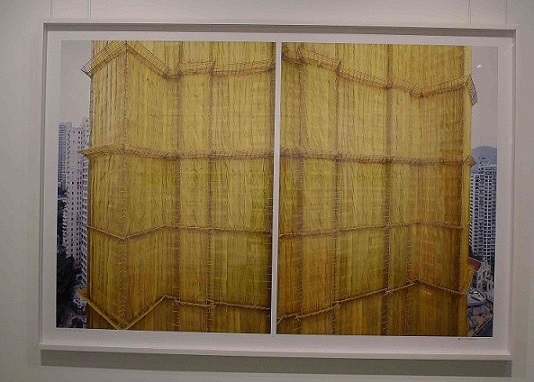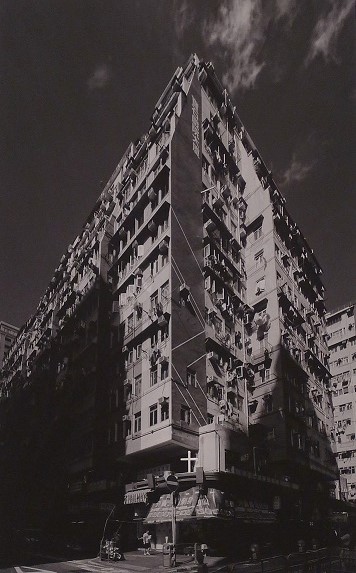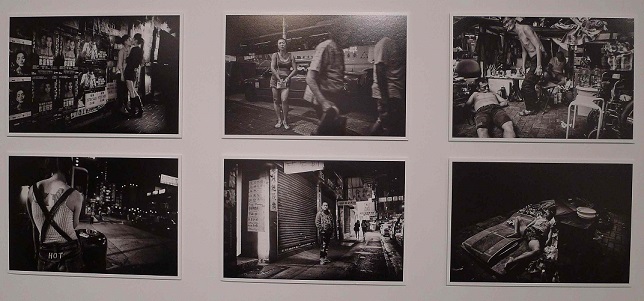Reviews & Articles
Hong Kong Contemporary Photography
John BATTEN
at 2:13pm on 18th July 2016



Captions:
1. Peter Steinhauer: Yellow Cocoon #2, 2010
2. Alfred Ko Chi Keung: Salvation, 2013
3. Jonathan van Smit: City of Dreams series, 2010-2016
4. Tay Wei Leng: Cathleen and Raphael, 2013, from her Hong Kong Living series
5. Benny Lam, Trapped series, 2012
原文以英文發表,題為〈香港當代攝影〉。
This is an unusually good photography exhibition and succeeds because it does not feel like another (‘usual suspects’) group showing of Hong Kong photographers. Key to its success, and making the title appear a lie, is that Hong Kong in all its variety is the exhibition’s subject.
Curator Tse Ming Chong, photographer and organiser of the non-profit Lumenvisum photography gallery also located at JCCAC, has selected a range of Hong Kong photographers, alongside those of foreign origin living in Hong Kong. There is also the subtle influence of European Photography magazine editor, Andreas Müller-Pohle, who has devoted an entire issue of the magazine to the exhibition. The magazine is both catalogue and conduit to a wider contact list. Cross-border cultural initiatives can be hit and miss, but the Hong Kong Arts Development Council’s funding this time has a successful outcome.
All aspects of Hong Kong are physically and emotionally covered – the city’s back alleys, countryside, sea, concrete and high-rises, the grittiness and life of the street and the contrasting living conditions of both the middle-class and poor are explored. This suggests a fill-in-the-box approach, but the choice of photographic genré and styles is appropriately consummate.
Taking centre-stage as you enter the exhibition is Peter Steinhauer’s large Yellow Cocoon #2 diptych. Seen is an enormous Mid-levels building under construction, its yellow safety netting playing hide-and-seek and a fractured anonymity. Hong Kong’s urban designs and political climate are unconsciously captured in this embracing photograph: in the bottom corner is a glimpse of the historic Chinese Rhenish Church, a pillar of solid community and its past, its façade now primly covered in pink tiles destroying its historic aura. And, across the adjacent nullah, separated by the incongruously named Beautiful Terrace, is a seemingly innocuous apartment block; 88 Bonham Towers: overlooking The University of Hong Kong, it is a 'military closed area' guarded by the People’s Liberation Army.
Singaporean photographer and former long-time Hong Kong resident Wei Leng Tay captures an entirely different mood. Her decade-long Hong Kong Living series is a quiet exploration of people at home. Wei explains that she “…spent time in (people’s) homes – chatting, observing, and photographing. The scenes were never fully staged and unfolded during the time we were together.” These are deceptively nonchalant photographs, part documentary-part casual cinema-like scenes of people relaxing, or ill-relaxed, in spare, tight, high-rise apartments with a TV or computer as, often unseen, the centre of attention. Wei’s remarkable photographs capture the placid safety of home life and the psychological, subtle tensions of generational, domestic and marital relationships.
Outside, around Hong Kong’s post-modern newer housing estates, Dustin Shum documents recreation and open spaces. These monolithic “blocks”, giving name to his photography series, have a unreal aesthetic: decorative features, painted walls and ground space often using a geometric rendering, more related to an Op-Art (optical art) tradition. However, these carefully applied, regimenting lines are purely control-focused: demarcation points of what can be done where and what’s simply not allowed. In Shum’s photographs they appear otherwordly, but actually they are considered, planned and actively used spaces. Benny Lam’s 2012 Trapped series attracted worldwide attention at the time, because of the shockingly small living conditions in which 200,000 people live in Hong Kong. These birds-eye-view photographs of illegally sub-divided units show a single small room where eating, sleeping, recreation and living unbelievably all take place.
Lau Chi Chung’s staged After School photographs perfectly capture the dichotomy between the lives of children and the later responsibilities of adulthood. Lau’s schoolchildren in uniform juxtaposed in the harsh adult-built landscapes of concrete urban and rural Hong Kong is like watching innocence meeting a hungry tiger.
Hong Kong’s vibrant street life appears in the varied photographs of Jonathan van Smit, Johnny Gin and Akif Hakan Celebi. Gin’s Architecture of Insurgency, structures built during the 2014 Umbrella protests, continue his documentation of Hong Kong varied architecture. Celebi captures people on Mong Kok’s crowded streets and the resulting images are highly - I imagine intentionally - digitally manipulated, to create a hyper-coloured realism. The traditions of black and white photography is well-handled by Alfred Ko Chi Keung, whose Salvation of a bare cross amongst a crowded tenement is a knock-out photograph – and, van Smit’s gritty photographs of late-night Kowloon is where he succinctly observes that “Dreams fade, money is king, and the moon is falling from the sky.”

Akif Hakan Celebi, Kowloon Express series
Link for further information:
'Hong Kong Contemporary Photography Exhibition 2016' @ JCCAC, Lower Gallery, Shek Kip Mei
A version of this review was published in the South China Morning Post on 17 July 2016.
